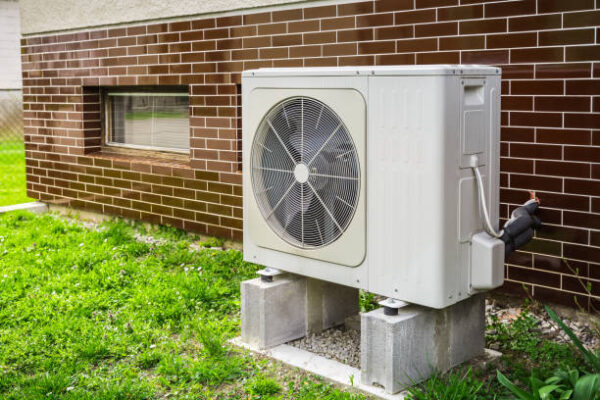1. The Digital Landscape of 2025: A Moving Target
Although WordPress remains the world’s most popular content‑management system, the environment surrounding it has become markedly more volatile. Release cycles now arrive every four to six months, introducing blocks, APIs, and design tools that re‑shape the back‑end experience overnight. Consequently, a site left untouched for even a single version risks incompatibilities that cascade from theme breakage to plugin conflicts.
Moreover, the broader web no longer tolerates stagnation. Search algorithms factor update cadence into rankings, browsers deprecate legacy functions on compressed timelines, and users expect friction‑free interaction across ever‑diversifying devices. Therefore, maintenance is no longer a matter of convenience; it is table stakes for survival.
2. Security in an Age of AI‑Driven Attacks
Malicious actors now leverage generative AI to scan repositories, craft polymorphic malware, and stage social‑engineering campaigns with unsettling precision. While WordPress core adheres to rigorous security protocols, third‑party ecosystems introduce thousands of additional attack vectors. Out‑of‑date plugins and themes, in particular, are rich targets because automated exploit kits can breach them within minutes of a vulnerability disclosure.
Furthermore, regulatory penalties for data breaches have tightened worldwide. Under India’s Digital Personal Data Protection Act 2023 and the EU’s GDPR, fines can erase multiple quarters of profit. Regular patching, hardening, and log review mitigate financial and reputational catastrophe. In short, proactive security maintenance is the least‑cost insurance policy an organization can purchase in 2025.
3. Performance Meets User Experience: Core Web Vitals 2.0
Google’s Core Web Vitals update in March 2025 introduced Interaction to Next Paint (INP) and expanded Cumulative Layout Shift (CLS) thresholds. Pages that fail these metrics witness measurable drops in visibility and, by extension, revenue. Because performance optimization is inseparable from maintenance—think database cleaning, image compression, and critical CSS generation—neglect directly harms search equity.
Likewise, user patience hovers near an all‑time low. Studies show that abandonment rates rise by 32 percent when load times stretch from one to three seconds. Accordingly, continuous monitoring and fine‑tuning are not luxuries; they are operational imperatives that keep conversion funnels unobstructed.
4. Compliance and Accessibility: Staying on the Right Side of the Law
Legal frameworks have intensified their scrutiny. The U.S. Department of Justice began citing specific WCAG 2.2 criteria in ADA enforcement letters, and India’s Accessible India Campaign mandates conformance for government contractors. Failure to conduct regular accessibility audits can therefore trigger litigation, contract loss, or costly retrofits.
Similarly, privacy statutes evolve faster than many sites update their policies. Cookie consent scripts, analytics configurations, and contact‑form storage procedures must be reviewed whenever regulations shift. Routine maintenance ensures that updates to legal disclosures, data‑processing addenda, and opt‑out mechanisms reach production environments before auditors arrive.
5. The Business Case: Protecting Revenue and Reputation
Downtime is more expensive than ever. According to Uptime Institute’s 2025 Global Outage Report, the median cost of a critical failure now exceeds USD 325,000 per hour. Yet a staggering proportion of incidents stem from deferred maintenance: outdated PHP versions, unmonitored SSL certificates, or bloated databases that topple under peak traffic.
Beyond immediate losses, brand perception suffers lasting harm. In a marketplace where 87 percent of consumers abandon carts after a single negative experience, the reputational cost of a hacked or sluggish site dwarfs the price of preventive upkeep. Therefore, maintenance provides quantifiable return on investment by safeguarding both revenue streams and public trust.
6. Automation Isn’t Enough: The Human Touch
Granted, modern hosting platforms bundle staging environments, one‑click rollbacks, and AI‑powered threat detection. Nonetheless, automation cannot interpret nuanced business logic, reconcile plugin changelogs with custom code, or craft contingency plans when third‑party vendors shutter overnight. A seasoned engineer must still validate backups, read error logs, and test updates in context.
Consequently, organizations that delegate maintenance solely to cron jobs invite silent failures. Only human oversight can pre‑emptively identify emerging incompatibilities, align technical decisions with strategic objectives, and communicate risk to stakeholders in terms they understand.
7. Freelance Digital Marketer’s Edge: Turning Maintenance into Value
For the freelance digital marketer, maintenance is not a cost center but a differentiator. Offering proactive care packages transforms one‑off website builds into recurring‑revenue relationships. By scheduling monthly performance audits, crafting fresh content aligned with seasonal campaigns, and ensuring tracking pixels fire accurately after every update, marketers sustain client growth while stabilizing their own income.
Moreover, maintenance data feeds campaign insights. Error‑log patterns reveal friction points in user journeys, while uptime analytics correlate directly with conversion peaks. Thus, maintenance becomes an intelligence platform that elevates marketing strategy beyond mere promotion into holistic digital stewardship.
8. Sustainable Development: Green Hosting and Efficient Code
As climate commitments reach board‑room agendas, digital footprints face sharper scrutiny. Inefficient queries and oversized images inflate server‑side energy consumption—costs that compound across millions of monthly visitors. Regular maintenance allows developers to refactor legacy code, implement lazy loading, and leverage next‑generation formats such as AVIF, thereby shrinking kilowatt‑hours alongside kilobytes.
In addition, many enterprises now demand carbon‑accounting reports from their supply chain. Demonstrating a disciplined maintenance routine—complete with version‑controlled improvements and measurable energy savings—positions a website as an asset rather than a liability in sustainability audits.
9. Future‑Proofing: Preparing for WordPress 7.0 and Beyond
WordPress Core Roadmap discussions indicate that version 7.0, slated for late 2026, will likely raise PHP requirements, overhaul the template hierarchy, and push Universal Themes into mainstream adoption. Sites that trail current releases will encounter a migration cliff, as deprecated hooks vanish and database schemas evolve.
Therefore, systematic maintenance today—keeping themes, plugins, and custom integrations compatible with the latest standards—serves as compound interest against tomorrow’s technical debt. By aligning now with coding best practices, site owners will circumvent the scramble and expense of an emergency rebuild later.
10. Action Plan: Implementing a 360‑Degree Maintenance Strategy
To operationalize these insights, organizations should first formalize a maintenance calendar that maps security patches, content refreshes, and performance audits to specific owners and due dates. Automated alerts must report anomalies instantly, yet escalation paths must lead to human responders with both technical authority and business context.
Next, draft a living playbook covering backup protocols, rollback procedures, accessibility checkpoints, and compliance reviews. Revisit this document quarterly, integrating lessons learned from incident post‑mortems and platform updates. By embedding maintenance into governance—not relegating it to ad‑hoc chores—businesses ensure that their WordPress presence remains resilient, compliant, and high‑performing throughout 2025 and beyond.





Leave a Reply
You must be logged in to post a comment.